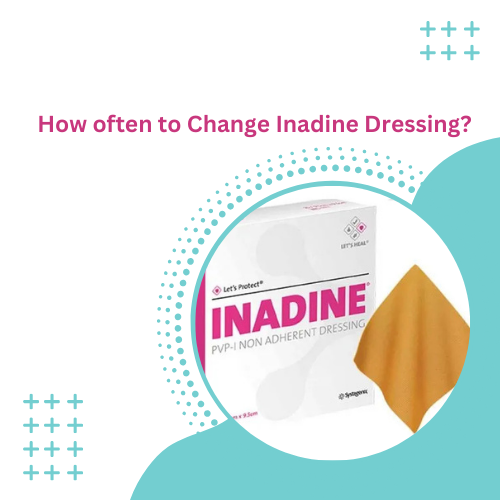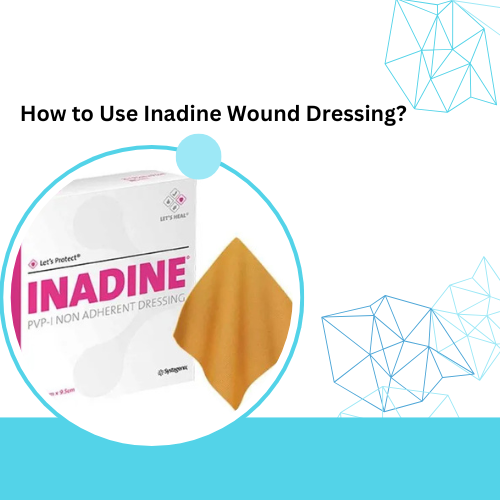How Often to Change Inadine Dressing: A Comprehensive Guide
Inadine dressing is a specialized wound care product that plays a vital role in managing various types of wounds. Understanding how often to change this dressing is crucial for effective healing and infection prevention. In this guide, we will explore the characteristics of Inadine dressing, its applications, benefits, and detailed instructions on changing it, including how to determine the optimal frequency for dressing changes.
What is Inadine Dressing?
Inadine is a sterile, non-woven dressing impregnated with iodine, which has antimicrobial properties. It is primarily used for managing wounds, particularly those that are exuding or at risk of infection. The iodine in Inadine helps to reduce bacterial load and promote a clean environment for healing.
Key Features of Inadine Dressing:
– Antimicrobial Action: The iodine in Inadine dressing helps to inhibit the growth of bacteria and other pathogens.
– Absorbency: It can absorb exudate, which helps to keep the wound environment moist while preventing maceration of the surrounding skin.
– Easy to Use: Inadine dressings are easy to apply and remove, making them suitable for both patients and caregivers.
Indications for Use
Inadine dressings are indicated for a variety of wounds, including:
– Chronic Wounds: Such as venous ulcers and diabetic foot ulcers.
– Burns: For minor to moderate burns that are at risk of infection.
How Often Should Inadine Dressing Be Changed?
The frequency of changing Inadine dressing depends on several factors, including:
1. Wound Condition: The amount of exudate, the presence of infection, and the type of wound all influence how often the dressing should be changed.
2. Patient Comfort: Patients may require more frequent changes if they experience discomfort or if the dressing becomes saturated.
3. Clinical Guidelines: Following the recommendations from healthcare professionals is essential for optimal wound care.
General Recommendations
1. Initial Change: Inadine dressings can generally be left in place for 24 to 48 hours. If the wound is heavily exudative, more frequent changes may be necessary.
2. Subsequent Changes: After the initial change, assess the wound and dressing daily. Change the dressing if it becomes saturated or shows signs of odor or infection.
3. Signs of Infection: If you notice increased redness, swelling, heat, or discharge from the wound, change the dressing immediately and consult a healthcare provider.
4. Moisture Level: If the dressing feels wet to the touch or appears discolored due to exudate, it’s time for a change.
Practical Tips for Changing Inadine Dressing
Changing an Inadine dressing requires careful technique to ensure the wound is not further damaged and to reduce the risk of infection.
Step-by-Step Guide
1. Prepare the Area : Gather all necessary supplies, including new Inadine dressings, gloves, scissors, and any additional wound care products.
2. Wash Your Hands: Begin by washing your hands thoroughly with soap and water or using hand sanitizer.
3. Don Gloves: Put on sterile gloves to minimize the risk of introducing bacteria to the wound.
4. Remove the Old Dressing: Carefully peel away the old Inadine dressing, starting from one edge. Avoid pulling on the wound itself. If the dressing is stuck, moisten it slightly with saline to ease removal.
5. Inspect the Wound: Take a moment to assess the condition of the wound. Look for signs of infection, exudate, and overall healing progress.
6. Clean the Wound (if necessary): If advised by a healthcare professional, gently clean the wound with saline or a suitable wound cleanser.
7. Apply the New Dressing: Place the new Inadine dressing over the wound, ensuring it covers the entire area. Gently press down to ensure adherence.
8. Secure the Dressing: Use tape or a secondary dressing to secure the Inadine dressing in place, depending on the type of wound and patient needs.
9. Dispose of Materials: Safely dispose of the old dressing and gloves in a biohazard container if applicable.
10. Document the Change: Record the date and time of the dressing change, along with any observations regarding the wound’s condition.
Additional Considerations
Patient Education
Educating patients about proper wound care and the importance of changing the dressing regularly can empower them to take an active role in their healing process. Encourage patients to:
– Monitor their wounds for changes.
Professional Consultation
While Inadine dressing is user-friendly, it’s important to consult with a healthcare professional for:
– Initial assessment of the wound.
– Determining the best dressing schedule.
– Advice on managing specific types of wounds, especially in complex cases.
Lifestyle Factors
Encourage patients to maintain a healthy lifestyle to support wound healing. This includes:
– Nutrition: A balanced diet rich in vitamins and minerals, particularly protein, vitamin C, and zinc.
– Hydration: Staying well-hydrated to promote skin health and overall wellness.
– Smoking Cessation: If applicable, quitting smoking can greatly improve healing outcomes.
Conclusion
Changing Inadine dressing regularly is crucial for effective wound management and healing. While general guidelines suggest changing the dressing every 24 to 48 hours, individual circumstances may require more frequent changes. By following proper techniques and staying vigilant for signs of infection, patients and caregivers can optimize the healing process.
Always consult with healthcare professionals for personalized recommendations based on specific wound conditions. With the right care and attention, the path to recovery can be significantly improved.




